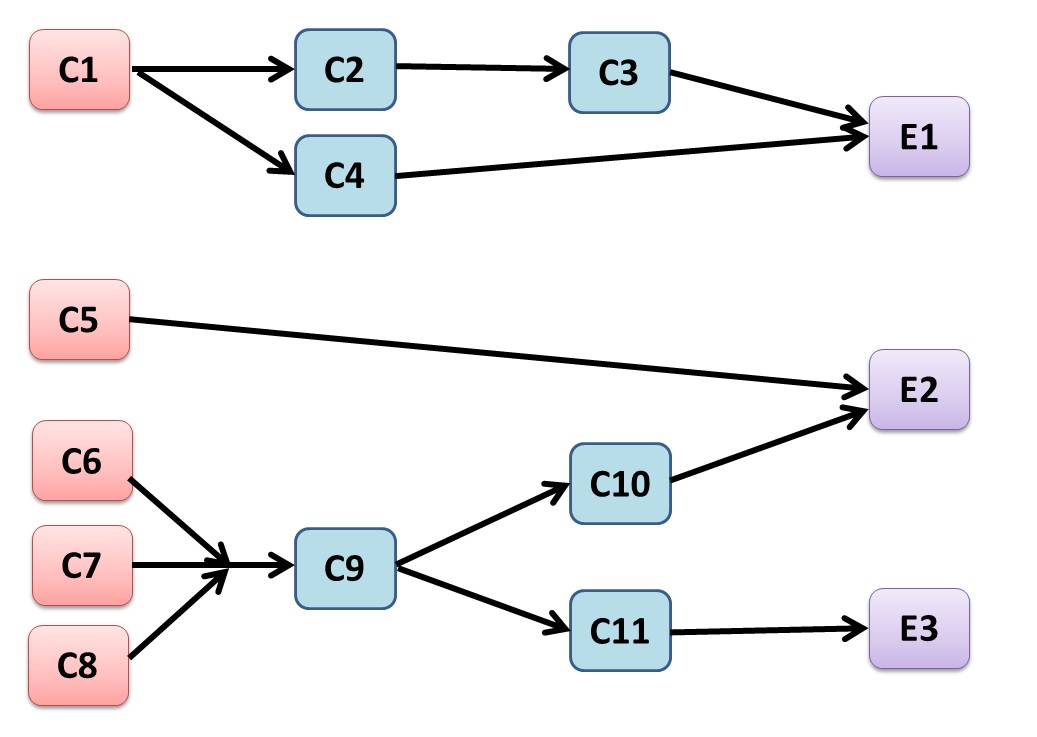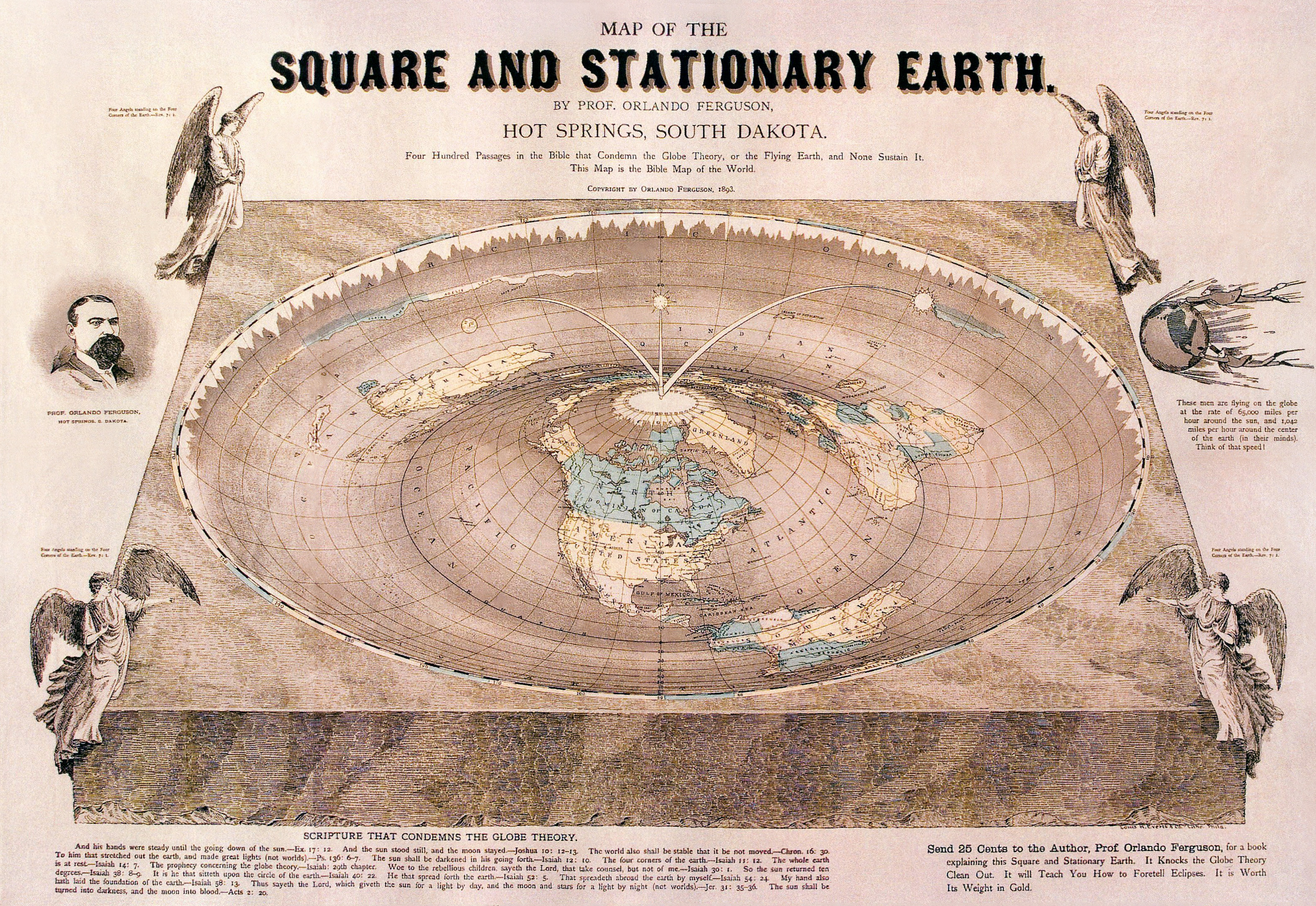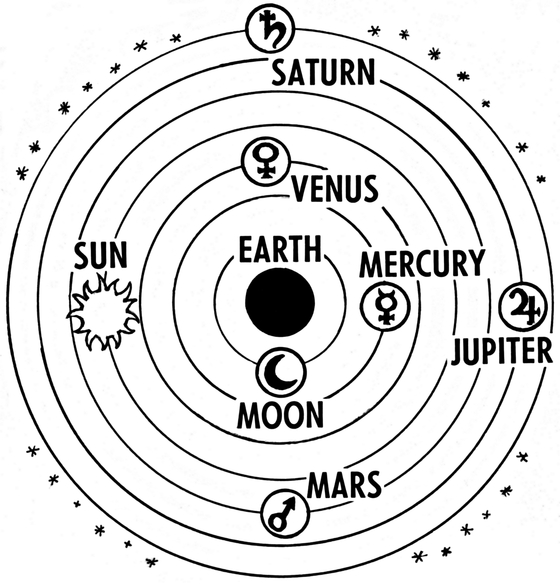By the end of this unit you should:

Read this.
One action (A1) may cause another action (A2). For example, a punch hitting a nose (P1) can cause the nose to bleed (B2)! This can be represented as:
[1] P1 → B2
In this example, the first action P1 is the cause and the second action B2 is the effect. Causes and effects may occur in series, which each effect becoming the cause for the next in the linear sequence. For example, a punch hitting a nose (P1) can cause the nose to bleed (B2). The blood drops (D3) onto a white T-shirt. The T-shirt gets a red stain (G4).
[2] P1 → B2 → D3 → G4
In this series P1 is the cause of B2 which is the cause of D3 which is the cause of G4. In short, there are three causes and three effects. Often the focus is on the final effect and the causes that result in that effect. By convention, we can use C for causes and E for the final effect, and so we can rewrite [2] as:
[3] C1 → C2 → C3 → E4
As there is more than one cause, we may need to refer to particular causes more precisely. The first cause in a chain of causes is called the root cause. In [3] the root cause is C1. The cause closest or close to the effect is called the proximal cause while a cause considered far from the effect are known as a distal cause. In [3] C1 is both the root cause and a distal cause, C3 is the proximal cause.
Linear causality chains often present a simplistic view of causes as there is only one possible path. A causal network can be drawn to represent multiple paths as shown in Figure 1.
Shared causes (common causes)have two or more paths connected to them (e.g. C1, which is also a root cause). Competing causes (rival causes) are those that occur on different paths (e.g. C2 and C4).
A necessary cause is one that must be present for the effect to occur while a sufficient cause is one that might be present, but is not necessary.

Figure. 1: Causality network for three related effects
For effect E1 in Figure 1 there is one root cause C1, one proximal cause C3 and based on distance in space, three distal causes (C1, C2 and C4). C1 is a necessary cause, because it is impossible to achieve effect E1 without C1 occuring first. C2, C3 and C4 are sufficient causes, since either the path with C2 or the path with C3 and C4 must be followed to acheive effect E1.
For effects E2 and E3, which cause or causes can be classified as:
Share your views with your partner. If you have any questions or comments, share them in the unit forum on ELMS.
Identify the probable or possible causes for the following effects. Use your world knowledge and be aware of your assumptions. The first one serves as an example
Share your views with your partner and/or in the unit forum on ELMS.
Read the explanation below to undersand assumptions, hidden assumptions and overlooked assumptions.
Simply put, assumptions are premises that are not overtly stated. These assumptions may be shared by a community and so there may be no necessity for stating them. However, at times the writers and readers of arguments may have different assumptions. In these cases, the argument becomes unclear for the readers. Overlooked assumptions occur accidently while hidden assumptions are those that are concealed on purpose.
Consider these lateral thinking puzzles. To solve them, you need to uncover the hidden assumption. Our assumptions may be attributed to individual, collective, cultural and societal conditioning. Cognitive biases may also affect our ability to discover assumptions and so it is necessary to be aware of cognitive biases that may impact our reasoning. The first one serves as an example
Share your views with your partner and/or in the unit forum on ELMS.


Watch this video clip (8 min 41 sec) showing how four witnesses report the same event in four different ways.
Witness accounts of any event vary greatly. People standing from different vantage points see the same event from different angles. People may be paying little or much attention to the event. Their view of the event or participants may suffer from cognitive bias.
Witness statements to many shootings that involve police officers shooting people in the United States differ on whether the police were justified in their decision to shoot. Eye witness statements are notoriously unreliable, with witnessses often suffering from the Rashomon effect. When the victim is black, the popular press in the United States tend to focus on race with claims (which may or may not be justified) that the incident was caused by racial prejudice.
For a fuller picture of the "hands up, don't shoot" movement, check out the Wikipedia page.

Decide whether these statements are facts or opinion.
Facts are proven true by evidence, e.g. as in court cases that are used to prove the defendant is either guilty or innocent. Courts, however, get things wrong as do scientists. This means that what had been accepted as a fact for years was in fact an opinion. Facts need supporting evidence. The accuracy of the fact depends on the strength of the evidence. Some of the facts that we believe now are likely to be proven incorrect in the future.



Submit an annotated causality network via ELMS.
Identify the causes that result in the effect/event. Name each type of cause. Draw a causality network using blocks for causes and arrows to show the direction of causality. Label each block (C1, C2,...Cn) and provide a key. Your assigned effect/event is decided by the final digit of your student ID number. See the list below for your assigned effect.
Make sure you can explain the following 8 concepts in simple English:
Running count: 105 of 108 logical concepts covered so far.